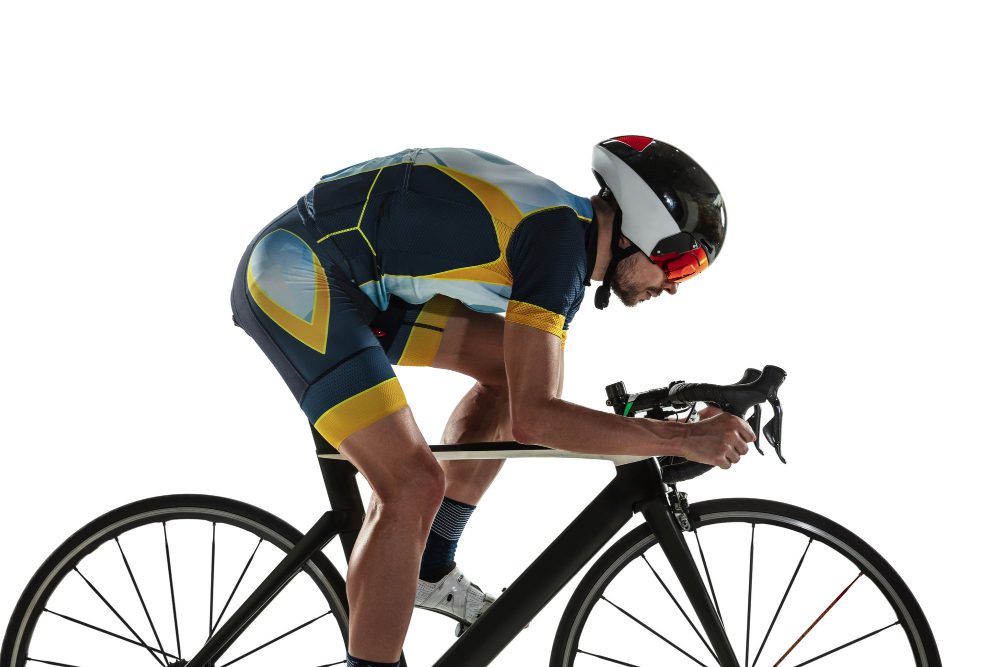What is VO2 Max Intervals for Cyclists?
VO2 Max intervals are a specific type of training that cyclists incorporate into their workout routines to improve their aerobic capacity. This type of training is named after VO2 Max, which refers to the maximum amount of oxygen that an individual’s body can utilize during intense exercise. By targeting and pushing this limit during intervals, cyclists can enhance their endurance and performance on the bike.
The Science Behind VO2 Max
VO2 Max is a key indicator of cardiovascular fitness and is influenced by factors such as genetics, age, and training status. It represents the maximum rate at which oxygen is consumed during intense exercise. The higher a cyclist’s VO2 Max, the more efficiently their body can deliver oxygen to the working muscles, enabling them to sustain high-intensity efforts for longer durations.
Why Use VO2 Max Intervals?
VO2 Max intervals are designed to challenge the body’s ability to consume and utilize oxygen effectively, thereby improving overall cardiovascular fitness. Regularly incorporating these intervals into training programs can lead to several benefits for cyclists:
- Increased Aerobic Capacity: By consistently pushing the limits of their VO2 Max, cyclists can enhance their body’s ability to take in and utilize oxygen efficiently.
- Improved Endurance: Enhancing aerobic capacity helps delay the onset of fatigue and enables cyclists to maintain higher power outputs for longer durations.
- Enhanced Performance: Higher VO2 Max levels translate to improved performance in races and other high-intensity cycling events.
How to Perform VO2 Max Intervals
VO2 Max intervals involve alternating periods of high-intensity effort with brief recovery periods. Here’s an example of a VO2 Max interval workout:
- Warm up for 10-15 minutes with easy pedaling.
- Perform a 3-5 minute high-intensity effort, aiming to reach 90-95% of maximum heart rate or a perceived exertion level of 8-9 on a scale of 1-10.
- Recover with 2-3 minutes of easy pedaling.
- Repeat the high-intensity effort and recovery cycle 4-6 times.
- Cool down with 10-15 minutes of easy pedaling.
Considerations for VO2 Max Intervals
While VO2 Max intervals can be highly effective, it’s important to approach them with caution and take certain considerations into account:
- Progression: Start with shorter intervals and gradually increase the duration and intensity as your fitness improves.
- Recovery: Ensure you allow enough time for recovery between intervals to avoid overtraining and injury.
- Monitoring: Use tools such as heart rate monitors or power meters to gauge your effort during intervals and track improvements over time.
“VO2 Max intervals are a valuable tool for cyclists looking to push their limits and unlock their full potential on the bike.” – Cycling Coach John Smith
In conclusion, VO2 Max intervals are an essential component of training for cyclists aiming to enhance their aerobic capacity and overall performance. By consistently challenging their limits and incorporating these intervals into their workout routines, cyclists can experience improvements in endurance and race performance. However, it’s crucial to approach VO2 Max intervals with care, gradually progress, and prioritize adequate recovery to optimize their effectiveness.
Is cycling or running better for VO2 max?
VO2 max, also known as maximal oxygen uptake, is a measure of the maximum amount of oxygen an individual can utilize during intense exercise. It is an important indicator of cardiovascular fitness and endurance performance. While both cycling and running are excellent forms of aerobic exercise that can improve VO2 max, there are some differences to consider.
Cycling for VO2 max
Cycling is a low-impact activity that offers great benefits for cardiovascular fitness. It engages large muscle groups in the legs, promoting efficient oxygen utilization. Cycling at high intensities can significantly improve VO2 max due to the sustained effort required, making it an ideal choice for individuals with joint issues or those looking for a non-weight-bearing exercise option.
Benefits of cycling for VO2 max:
- Low impact on joints
- Sustained effort leads to improved endurance
- Engages large muscle groups for efficient oxygen utilization
Running for VO2 max
Running is a weight-bearing exercise that places greater stress on bones and joints. However, it is a highly effective way to improve VO2 max due to its high-intensity nature. The repetitive impact of running helps build bone density and strengthens the musculoskeletal system. Running can be challenging for beginners or individuals with certain injuries, so it is important to start slowly and gradually increase intensity.
Benefits of running for VO2 max:
- High-intensity exercise
- Improves bone density and strengthens musculoskeletal system
- Accessible and convenient
Considerations
When choosing between cycling and running for improving VO2 max, it is important to consider personal preferences, fitness level, and any existing injuries or conditions. Both activities offer excellent cardiovascular benefits, so the choice ultimately depends on the individual’s specific needs and goals.
“Whether you choose cycling or running, consistency and intensity are key to improving VO2 max.”
To maximize results, it may be beneficial to incorporate both cycling and running into a well-rounded training program. Cross-training allows for variety, reduces the risk of overuse injuries, and challenges different muscle groups.
| Cycling | Running | |
|---|---|---|
| Impact on joints | Low impact | Weight-bearing |
| Muscle groups targeted | Legs | Full body |
| Accessibility | Requires a bike and open roads | Can be done almost anywhere |
| Intensity | Sustained effort | High-intensity bursts |
Ultimately, the best exercise for improving VO2 max is the one that you enjoy and can consistently perform at a high intensity. Whether you choose cycling or running, incorporating intervals and progressively challenging workouts can help you reach your VO2 max goals and enhance your overall fitness.
What is a good VO2 max by age?
The VO2 max is a measure of how efficiently your body uses oxygen during exercise. It is an important indicator of cardiovascular fitness and endurance. While the average VO2 max varies by age, gender, and fitness level, there are some general guidelines to help you assess your own fitness.
Age brackets for good VO2 max:
- 20-29 years: A VO2 max of 40-45 ml/kg/min is considered excellent, while 35-40 ml/kg/min is good.
- 30-39 years: An excellent VO2 max falls within the range of 38-43 ml/kg/min, while a good VO2 max is between 33-38 ml/kg/min.
- 40-49 years: For this age group, an excellent VO2 max is around 35-40 ml/kg/min, and a good VO2 max is approximately 30-35 ml/kg/min.
- 50-59 years: A good VO2 max for individuals in this age range is 27-31 ml/kg/min, while an excellent VO2 max is 32-36 ml/kg/min.
- 60+ years: A good VO2 max for individuals aged 60 and above is 24-28 ml/kg/min, while an excellent VO2 max is 29-33 ml/kg/min.
It is important to note that these values are just general guidelines and can vary based on individual factors such as genetics and training history.
Having a good VO2 max is beneficial for overall health and performance in various activities, including cycling. It indicates a higher level of aerobic fitness and the ability to sustain intense exercise for longer durations.
If you are keen on improving your VO2 max, there are specific training techniques, such as VO2 max intervals, that can help.
Training for improved VO2 max:
VO2 max intervals involve exercising at intensities close to your maximum aerobic capacity for relatively short periods, followed by recovery intervals. This type of training stimulates your body to adapt and improve oxygen utilization.
Here is an example of a VO2 max interval session for cyclists:
| Interval | Duration | Intensity |
|---|---|---|
| Warm-up | 10 minutes | Easy pace |
| Interval 1 | 3 minutes | 90-95% of max effort |
| Recovery 1 | 3 minutes | Easy pace |
| Interval 2 | 3 minutes | 90-95% of max effort |
| Recovery 2 | 3 minutes | Easy pace |
| Interval 3 | 3 minutes | 90-95% of max effort |
| Recovery 3 | 3 minutes | Easy pace |
| Cool-down | 10 minutes | Easy pace |
Performing VO2 max intervals once or twice a week, along with proper rest and recovery, can help improve your VO2 max over time.
In conclusion, understanding what constitutes a good VO2 max by age provides valuable insights into your cardiovascular fitness and overall health. By incorporating targeted training methods, such as VO2 max intervals, into your routine, you can work towards improving your fitness levels and achieving better performance in activities like cycling.



